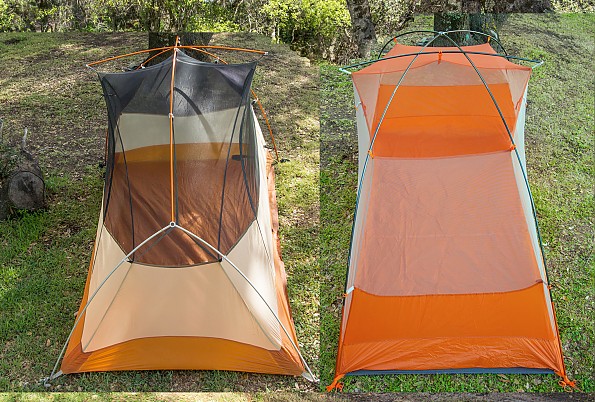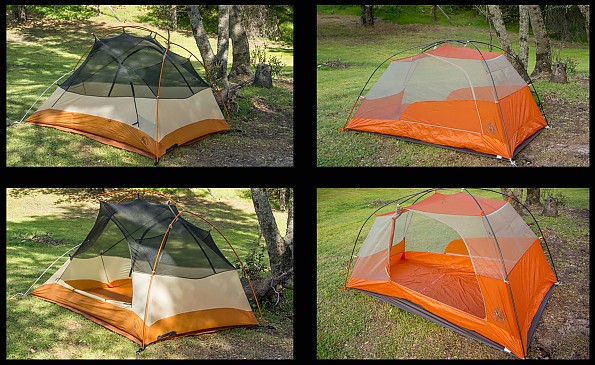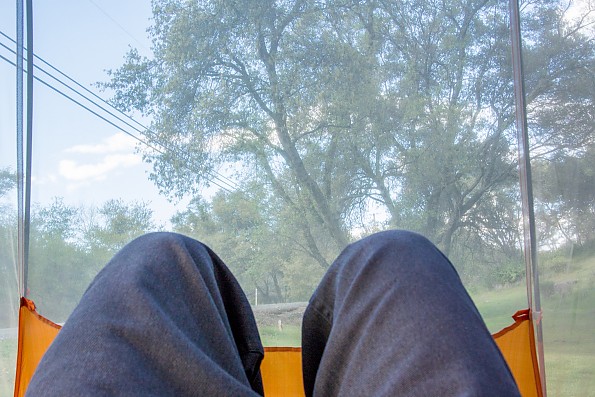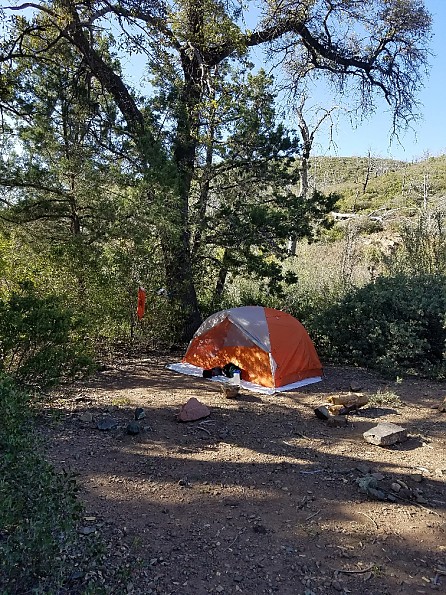Big Agnes Copper Spur HV UL2
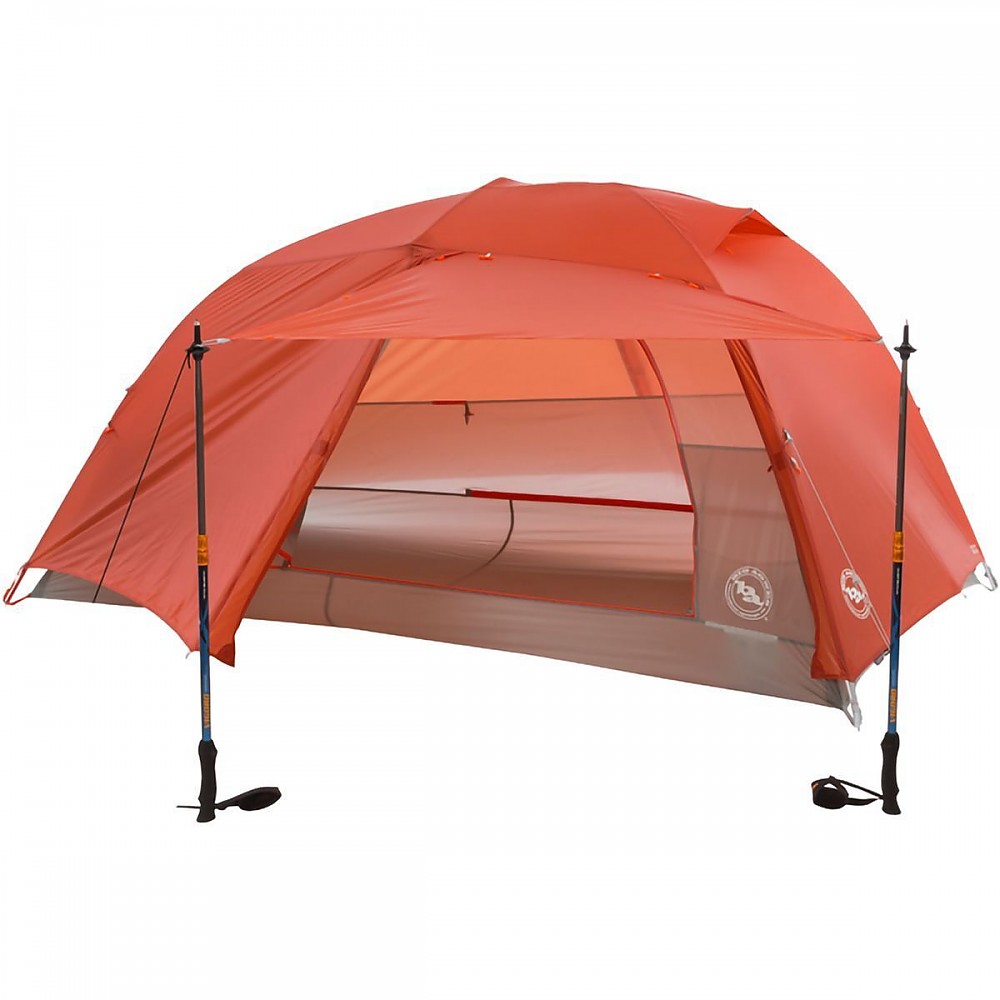
The Copper Spur HV UL2 and UL2... A Tale of Two Tents.
Pros
- Extremely lightweight
- Highly rated
- Packs small
- Durable
Cons
- Expensive
- Does not come with footprint
- New sheer fabric clouds views
- Several variations make choosing confusing
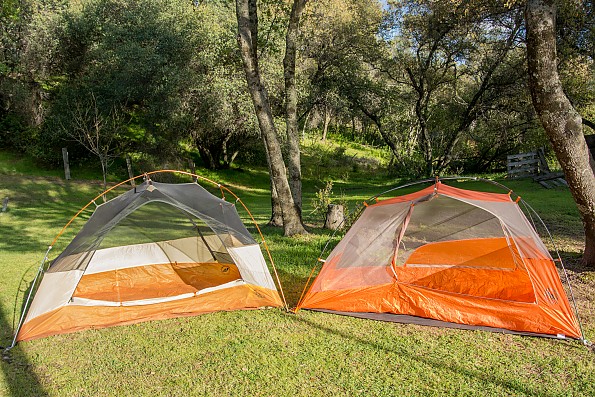 Big Agnes has been around for about twenty years. Should you require it, their outstanding customer service could not possibly be improved upon. Their stated goal is to produce the best gear possible to help folks get outside and chase their dreams. I think they stand true to that goal. You can learn more about them here: https://www.bigagnes.com/our-story.
Big Agnes has been around for about twenty years. Should you require it, their outstanding customer service could not possibly be improved upon. Their stated goal is to produce the best gear possible to help folks get outside and chase their dreams. I think they stand true to that goal. You can learn more about them here: https://www.bigagnes.com/our-story.
Copper Spur is the name of this product line. UL stands for ultralight [weight] and 2 is for the number of persons it's designed to fit; provided you don't mind touching. I use mine as a single person tent. The new model carries an HV to designate high volume. More on that later.
Currently both tents are still available, though I believe the old model, now dubbed "Classic", is just old inventory being sold off at a discount. The HV UL2 is the new model, though the two are quite similar. The Classic at current, discounted prices under $250, is an incredible deal.
If you are not familiar with ultralight tents, you'll be surprised at how thin the material is. That's how they make them light. For what it is, it's very strong and durable. That said, it does require more care in handling and discretion in setting up. Everything is a trade-off.
 Both tents weigh in at about 3 pounds with poles, stakes, rain fly, and carry sack. Both come with two smaller bags for the stakes and poles; which fit in the main bag along with everything else. They are both about the size of a 2-liter soda bottle when loosely folded in their sacks. In addition, both can be carefully folded and rolled tightly, then occupying about half that space, save for the length of the poles in their respective bag. As such I purchased a couple of separate, small bags for the fly and tent. This offers more options when packing in the confines of a kayak.
Both tents weigh in at about 3 pounds with poles, stakes, rain fly, and carry sack. Both come with two smaller bags for the stakes and poles; which fit in the main bag along with everything else. They are both about the size of a 2-liter soda bottle when loosely folded in their sacks. In addition, both can be carefully folded and rolled tightly, then occupying about half that space, save for the length of the poles in their respective bag. As such I purchased a couple of separate, small bags for the fly and tent. This offers more options when packing in the confines of a kayak.
Both tents are freestanding. I love being able to lift them over my head to shake out any sand or dirt after use. Both models have a rain fly that can be used alone with just the footprint to make a simple and very compact shelter during the summer months. Neither comes with a footprint. Those have always had to be purchased separately for some odd reason.
Big Agnes says that the Copper Spur HV UL series has been redesigned with new features inside and out, using proprietary materials that are lighter and stronger than ever. That said, I never experienced any problems with the old stuff. Mine has been through wind events at the rim of the Grand Canyon, rain, iced over, etc. At around 8 years old, and through all its battles, it is still in good, usable condition.
I have never had a problem with a seam and they are all still sound even at the stress points. Though Big Agnes states the new material is more durable, it looks and feels just about the same as the old stuff, is reinforced in all the same places, and in all the same ways. The poles feel a little better, maybe. The old ones were superb and I never needed to use the emergency pole splint that came with them. The new model also includes one. All said, I expect to get the same great service life out of my new Big Agnes Copper Spur HV UL2 as that from my old model.
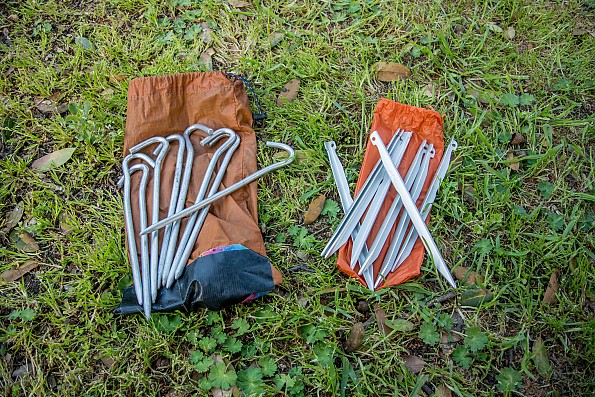 My new Copper Spur HV UL2 came with the stakes on the right. While more compact, I prefer the ease of use provided by the ones on the left, which accompanied my old Copper Spur UL2. Are you thinking what I'm thinking? Perhaps a preemptive piece of gaffers tape or the like on the inside bottom of that new storage bag might be a good idea, yes?
My new Copper Spur HV UL2 came with the stakes on the right. While more compact, I prefer the ease of use provided by the ones on the left, which accompanied my old Copper Spur UL2. Are you thinking what I'm thinking? Perhaps a preemptive piece of gaffers tape or the like on the inside bottom of that new storage bag might be a good idea, yes?
In the photos above, the old UL2 is on the left accompanied by the new HV UL2 on the right. As you can see, the main difference between the new model and the old is the pole design. I have found that this new design is a little easier to assemble, in addition to supporting the tent a little more. I think the best way to describe the new model would be to say it's less pyramid-ish and more cube-ish. Though the footprints are just about equal, the HV does live up to its name (high volume) due to the almost parallel walls afforded by the new frame design. It feels like a much larger tent inside. Is this extra room necessary? No, but without any added bulk it is welcomed.
You can also see that the door openings differ from the old model. Yes, I said openings, as in there are still two doors; one on each side. No need to climb over a partner for a trip to the bathroom during the night. Both models sport the same loop type fasteners to keep the doors rolled up and out of the way when open, but the new doors open to the side instead of down.
I found there to be a few advantages to this design. First, the doors roll up and stow to the side instead of stowing along the bottom where they can catch dirt and get caught on things as you're climbing in and out. Second, they open all the way to the top, making entries and exists a tad easier. Finally, the positioning of the zippers hold them more taut. This makes opening and closing the zippers easier while requiring a little less care in handling. The zippers on my old UL2 have become just a little temperamental with wear; I can see how this new deign will help with that as it ages. I definitely prefer the door design of the new HV UL2 to the older UL2 model.
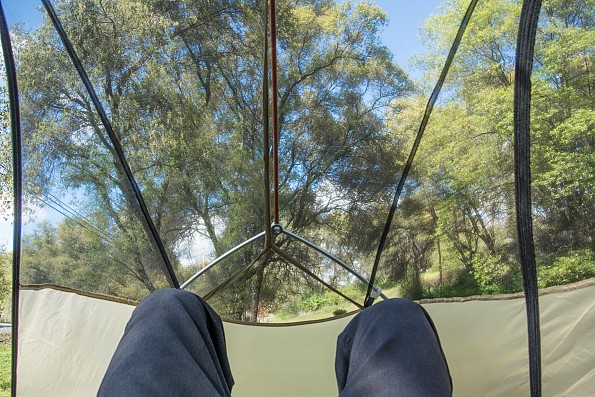 The sheer fabric used on the old tent is black. As you can see above, it has little effect on colors and is almost invisible. It is, however, just as easy to see into the tent as it is to see out of it.
The sheer fabric used on the old tent is black. As you can see above, it has little effect on colors and is almost invisible. It is, however, just as easy to see into the tent as it is to see out of it.
Looking above, you'll notice that the new Coper Spur HV UL2 sheer fabric is not so invisible. Though it does make seeing into the tent considerably more difficult, it comes at the cost of somewhat clouding your view when looking out. Privacy is not generally a concern for me in the back country. I very much prefer the transparency of the fabric used on the old model; though it's certainly not a deal breaker. I'm sure that some will prefer the added privacy instead.
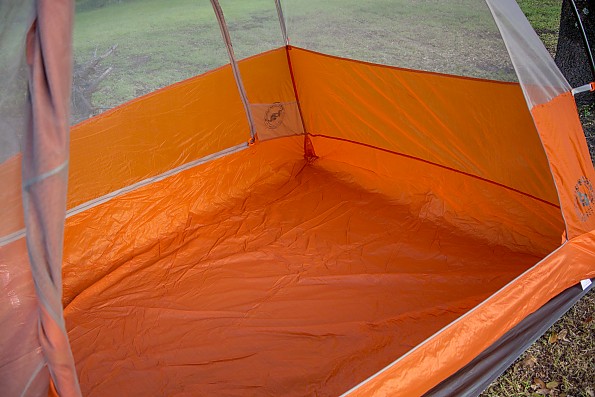
The floorspace inside the new HV UL2 is pretty much the same as the old model. There's still a gear pouch in the lower corners near your head. They've added another gear pouch up high, spanning the width of the front wall (head end). That one has a small opening to pass a cord through for earbuds, charging, or whatever. They have also added loops to attach optional pouches, including one they call the Gear Loft, which spans across the ceiling.
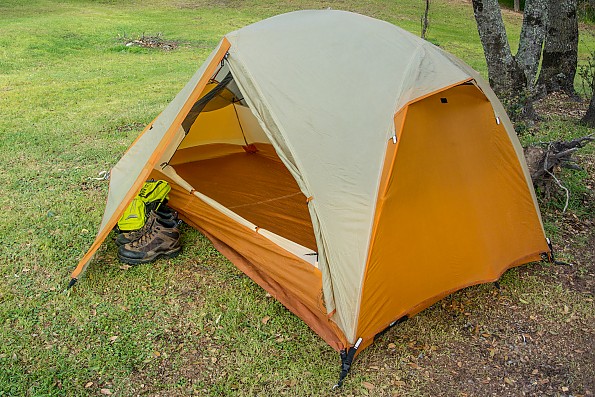 Covered with the rain fly, my new Copper Spur looks pretty much the same as my old one, pictured above. There is a nice sized vestibule on both sides to keep the things you want to stay out of the weather just so. The amount of dry space under the fly is quite impressive for a tent of this weight and packed size. The vestibules are also very close to the ground; another plus.
Covered with the rain fly, my new Copper Spur looks pretty much the same as my old one, pictured above. There is a nice sized vestibule on both sides to keep the things you want to stay out of the weather just so. The amount of dry space under the fly is quite impressive for a tent of this weight and packed size. The vestibules are also very close to the ground; another plus.
Big Agnes has once again upped the ante by redesigning the rain fly. The very newest Copper Spur HV UL2 now features double zippers on both vestibules that allow you to make an awning using a couple of trekking poles. It seems this one is dubbed the HV UL2 2020. If that's a feature you want; and it is a nice feature, then be sure the one you purchase has it because my Copper Spur HV UL2 purchased last year does not. Of course I only paid $225 for it, so there's that. I've included a stock photo below so you can see what that feature looks like.
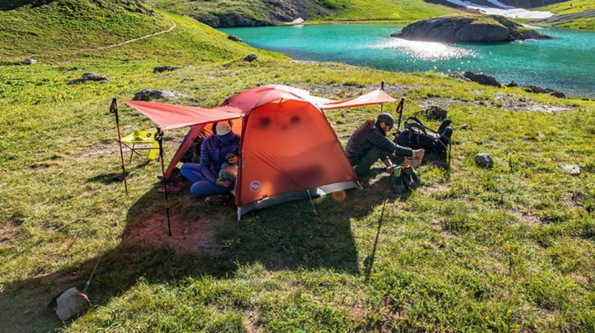
Last but not least, and to add to the confusion, is what they call Mountain Glow. It's just a string of LEDs around the top of the tent. I'm happy with my Black Diamond Moji which only costs about $15, and can be removed and used outside of the tent. If you want it built in it will add at least $50-$100 to the cost of the tent. Another stock image below for your viewing pleasure.

So there you have it; the differences between the various Copper Spur UL2 models currently available. They are all excellent tents as evidenced by all the great reviews. Personally, as long as the classic is available, I'd get the classic over the HV model without the awnings if I could save $75 or more. Then again, I'm cheap.
I will say that the new doors are better designed functionally, and the zippers are better. I suspect they will go much longer before becoming, as I say, temperamental. Other than that the differences are truly negligible. My tent was getting a little tired and at $225 I couldn't pass the HV up. Overall, I do like it better.
Now the newest HV UL2 2020 model includes the awnings, but I'm just not sure how much I'd actually use that feature as I don't spend much time in my tent other than sleeping. I don't think I'd be willing to pay above $100 more for that one...but I'm cheap and your milage may vary.
Background
I'm just a guy who enjoys the outdoors. My old Copper Spur UL2 is about 8 years old. Most of my camping is via kayak, not backpack, though the gear requirements are about the same. It's seen its' share of battles, has weathered all admirably, and is still in good usable condition. I recently purchased a new Copper Spur HV UL2, mainly because I couldn't pass up the deal. I do welcome the extra volume and like it a little better. I haven't spent much time with this new one yet, but have no reason to doubt the long term experience will be just as rewarding as that of my original.
Source: bought it new
Price Paid: $225
Excellent choice for three-season backpacking or car camping.
Pros
- Roomy
- Easy to set up
- Light
- Reflective points
Cons
- Price
- Zipper on rain fly snags easily
- Pole configuration requires a lot of room initially
- Stakes difficult on vestibule
The newly improved Big Agnes Copper Spur HV UL2 was on many of the "Best Of" lists when I was researching a new tent. I started shopping around, and found it on sale for $100 off, so jumped on it.
I had been using a one-person, non-freestanding tent, and looking for a tent with a little more room, free-standing, and lighter. This tent more than met all requirements. The stated weight of this tent was 3 lbs packed. So I was getting almost twice as much room for almost two pounds less my current tent.
Upon receipt, I worried that it was TOO light and flimsy, it was incredibly lightweight, almost wispy. So I use a sheet of Tyvek as a footprint.
The initial setup of this tent was very quick and easy. The tent has color-coded tabs to show the head (slightly wider) and the feet, which corresponds to color coded poles. The daddy-longlegs-shaped 4-way pole system requires some space to spread out.
The pole tips slip easily into the grommeted tabs and stay put while erecting all four corners. Each side of the tent snaps to the pole and the tent is erect. There's one more smaller cross pole that goes across the top and snaps into ball-and-socket plastic locks that instantly adds another five or so inches of head room. I was instantly impressed by the amount of space this tent had! There are two doors with zippers that have loops on them, making them easy to grab, and they slide very smoothly.
The tent body has pockets on each side for your stuff, plus another pocket across the top with headphone jack slots. There are reflective tabs to show all the important pieces to set up at night with a headlamp. And the headroom was amazing! I easily fit my sleeping pad, my entire backpack, and all my gear into this tent and still have room to move around.
The rainfly has color coded snaps that correspond to the poles/tent body to show head and foot, and is super easy to put into place. Each corner snaps on. It has a small vent at the top to allow for additional ventilation. The sides stake out for a double vestibule. However using the provided stakes has been a bit of a challenge for the vestibule. It may be because of my lack of experience in this type of stake (j-peg style).
The ground where I've used this tent is very hard, and the angle to stake the vestibule has to be more severe to pull it taut and hang on for the zipping and unzipping. It becomes unstaked very easily. So I'll invest in a different type of tent stake for the vestibules. The rainfly is also a bit more difficult to zip and unzip and gets caught easily.
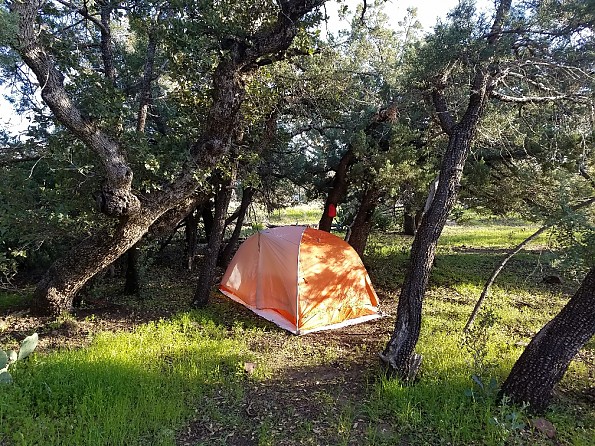
I have camped in this tent in warm weather without the fly, and in as low as 40 degrees. There was a lot of condensation in the colder temperatures near the river, but that really could not be helped. I've only been in it in a light rain, so cannot attest to its weather resistance. I have now taken it on seven different trips, and really love this tent. It was super easy and quick to take down as well.

Overall, the weight, size, and extra features of this tent make it very much worth the money I spent on it. I will invest in a couple of stakes for the vestibule, and it should be perfect!
Source: bought it new
Price Paid: $349
Overcoming the fear of the lightweight material.
Pros
- Very pleased with ability in heavy rain
- Weight
- Fast setup
- Packs up small
Cons
- Price
- Material requires more TLC
- Ground cover expense
I have had this for about seven years and purchased on sale at REI and wanted weight savings since my North Face Bullfrog began leaking (loved that tent for over 20 years). I was super skeptical about the material resistance to tears since often have to pitch in interesting conditions. I made a Tyvex floor for a ground cover after getting some tears on the floor both by the rocks and a 90-pound Lab. The tears were repaired with that invisible tape product which is pretty amazing stuff. No problems since and if I get another tear will just repair. I am pretty tough on my gear.
Rain...on one pack in trip, had to put up in what might be considered almost a swamp with heavy and constant rain, stayed dry even the floor sitting in a puddle. I feel comfortable in any wet conditions. I have not experienced what one would call very heavy winds yet.
Stakes...takes a little time to get used to, they are small but lightweight and easy to leave in the woods when packing up and seem to be easy to pull up in a wind. I have lost a few but on one trip into the Flattops here in Colorado with a headlamp the reflective nature of the stakes, found six that someone had forgot about or got in a hurry to get out, so good on stakes again.
Packability...Since I often deploy to out-of-state Wildland Fires and have to fly in, the size really helps checking in at the airports and keeping two weeks of gear under 40 pounds, if needing to get in by a helicopter we are really limited to weight. The interesting thing about big fires, it can still rain and even been snowed on several times, so a tent is preferred vs. lying under a tarp as some do.
I now own several Big Agnes products and find their quality excellent and if need be can always drive to Steamboat where the company is. Nice supporting something local.
Full disclosure: if they still made the Bull Frog, I would probably not be reviewing this particular product as hard to predict if can still get the mileage on this lightweight material.
Background
I own a large BA tent for car camping, it has been wonderful even in winter conditions. Their sleeping pads are first rate.
Source: bought it new
Price Paid: $198
Easy, quick setup, performs well even in heavy rains, lightweight. Love it.
Pros
- Can set it up under 5 minutes
- Lightweight
- Free standing if ground too hard
- Kept me dry in heavy wind and rain
- 2-person tent, roomy for one but can fit two
- Durable so far
Cons
- Does not come with footprint
I have the new 2020 version of the HV UL2 tent. Love it so far. After first watching a YouTube video on how to set it up, I have always been able to set it up in 5 minutes or less. I have slept in weather in the very low 30’s, as well as in heavy thunderstorms with gusting winds and heavy rains. So far the tent has performed admirably.
Though pricey, it does not come with a footprint, so I made my own out of Tyvek (be sure to wash the Tyvek first before you cut to customize it to the tent, as it shrinks during the washing). If by myself, there is plenty of room for me and all of my gear.
Two people can fit with both of their sleeping pads, though in that event the backpacks will probably need to go in the vestibule area. The zipper works great on the tent. When zipping the rainfly, however, go a little more slowly as otherwise the zipper can get caught in the storm flap material.
There is a tent-wide mesh bag at the foot end of the tent for storage. I used it during a rainstorm to put my iPad in it, and was able to lie back and watch videos just like watching tv in bed. The tent, poles and Tyvek footprint all weigh just under 3 pounds, which weight is more than acceptable to me for a quality, easy to use backpacking tent.
This tent is also free standing, so it can be set up without stakes if conditions require no stakes. I use stakes when possible, to keep heavy winds from blowing the tent around (or away) when I am not in it. I also like being able to gaze up at the sky on clear nights that allow me to keep the rainfly off.
Source: bought it new
Price Paid: $360 on sale REI
Very sturdy. Holds up against wind and rain. For an overweight male and my fit wife, we had plenty of room for two 20-oz pads and a few clothing items at our feet. No room of course for bags inside, but side opening doors, generous vestibules at each side door, footprint matches perfectly.
All together this tent, stakes, and sack (a stake for each cord, can get away with fewer), tent poles and sack, footprint, rain fly, and tent bag, all pack out for me at 3.6 lbs.
Pros
- Sturdy in rough winds/rain
Cons
- What you get in room you give up in weight, 3.6 lbs with footprint, stakes, and all.
When I'm alone this is a suite, for two fat adults would be tight-ish, me (fat), wife (fit), comfortable. It's very study and free standing (pitches w/o stakes, though who'd do that).
4.5 / 5. If it were lighter I'd give it a 5, but at 3.6 pounds packed out it has me drooping for something lighter.
Source: bought it new
Your Review
Where to Buy
You May Like
Specs
| Price |
MSRP: $529.95 Current Retail: $370.93-$549.99 Historic Range: $219.99-$599.95 Reviewers Paid: $198.00-$360.00 |
| Trail Weight |
2 lb 11 oz / 1.22 kg |
| Packed Weight |
3 lb 2 oz / 1.42 kg |
| Fast Fly Weight |
2 lb 2 oz / 964 g |
| Packed Size |
19.5 x 6 in / 50 x 15 cm |
| Floor Area |
29 ft² / 2.7 m² |
| Head Height |
40 in / 102 cm |
| Vestibule Area |
9ft² / 9ft² / 0.8 m² / 0.8 m² |
| Footprint Weight |
5 oz / 142 g |
| Number of Seasons |
3 |
| Number of Doors |
2 |


